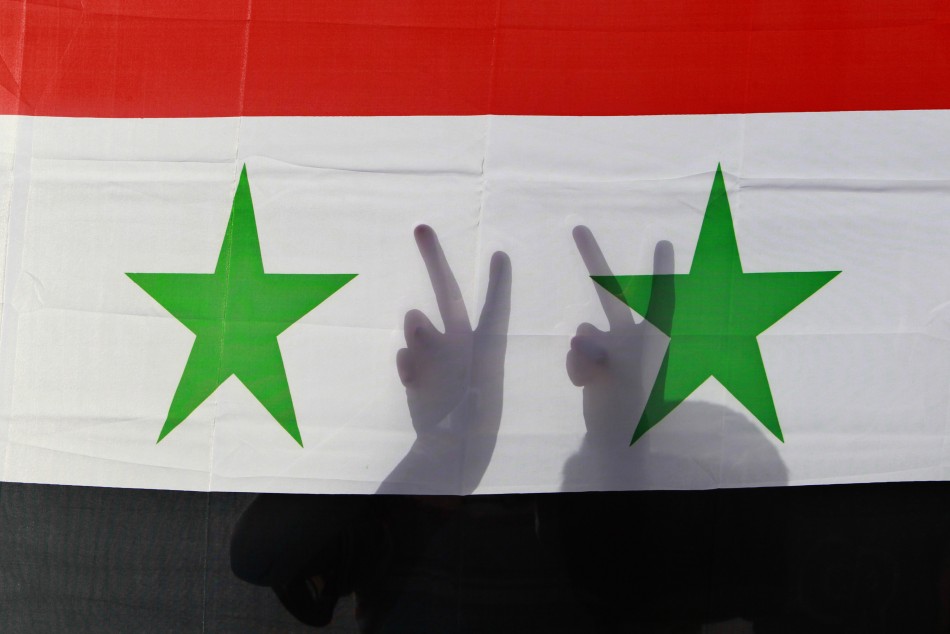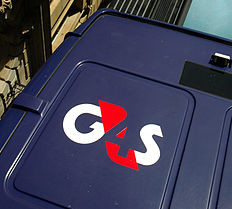This study compares responses towards ethnical terrorism of both (Provisional) Irish Republican Army (IRA) and Kurdistan Workers Party (PKK) respectivelly its affiliate – Kurdistan Freedom Hawks (TAK). Both cases, though very distant from each other at the first sight, link a vast number of similarities. In both cases, we can observe a strong perception of ethnicity, both insurgency and terrorist tactics and strategies, initial and ongoing oppression of government, both military and peaceful attempts to solve the conflict. Most importantly both were suppressed by governmental forces with various errors leading all parties of conflict into the „Terrorism Trap“. Hence the focus of this paper will be on major attacks from both PKK and IRA and mostly on governmental response which led deeper into the Trap. Lessons and informationidentified in this paper should help in deeper understanding of „The Kurdish Question“ and how can avoidable mistakes in response to terrorism influence the outcome.
Introduction
I will compare Turkish and British governmental responses towards ethnical terrorism of both (Provisional) Irish Republican Army (IRA) and Kurdistan Workers Party (PKK) and its affiliate – Kurdistan Freedom Hawks (TAK) in this paper. Both cases, though very distant from each other at the first sight, link a vast number of similarities. In both cases, we can observe a strong perception of ethnicity, both insurgency and terrorist tactics and strategies, initial and ongoing oppression of government, both military and peaceful attempts to solve the conflict. Most importantly both were suppressed by governmental forces with various errors leading all parties of conflict into the “Terrorism Trap”. Hence the focus of this paper will be on major attacks from both PKK and IRA and mostly on governmental response which led deeper into the Terrorism Trap.
Main objective of this research paper is to analyse British and Turkish governmental responses and to identify false steps both governments have taken in fighting the insurgency and terrorism of above-mentioned terrorist groups. Based on these lessons, the paper will also suggest possible solutions to these problems. In order to reach its goal, the paper will examine closely the decision-making process within governments and official places that has often led to unfortunate series of events in terms of fighting the terrorism.
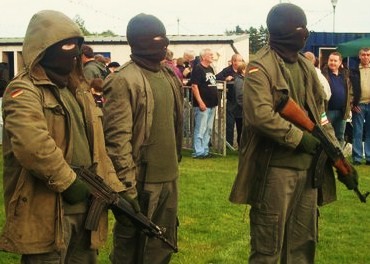
The main hypothesis of this paper is that the decision-making process within government is not a matter of a single person, but of elite group whose members are often inconsistent in their attitudes, beliefs and thinking. Combined with some sociological aspects such as the Group Dynamics, these leads to flaws in the very process and subsequently in real consequences. Furthermore, comparing governmental responses to IRA and PKK attacks can transfer lessons learnt from fighting the IRA to PKK-Turkey conflict.
In order to as fully as possible analyse the decision-making process and its flaws that has led to the governmental responses against IRA and PKK, I chose two of models of policy analysis.
The first model is called Group Think. This concept by Irving Janis was originally used to analyse a disastrous decision of J. F. Kennedy´s administration to invade Cuba in 1961. Janis noticed a system-based mistake in decision making that caused unfortunate Bay of Pigs Invasion. It is called the Group Dynamics – a sociological phenomenon that occurs very often in political decision-making that is made in group. Janis described its aspects and introduced how to avoid this system error (Janis, 1991). Group Think Model identifies errors in the procedures of decision-making process. It usually leads to false steps to be taken.
Complementary to the top-down model, will be bottom-up model of analysis – Model of Standard Operating Procedures (SOPs) arguing that the governmental response is not always initiated from the top positions, but also by conduct of individuals and institutions with governmental structures (such as military). These actors conduct according to set of rules and procedures. That can lead to reaction (e.g. of military forces) that triggers further worsening of the conflict.
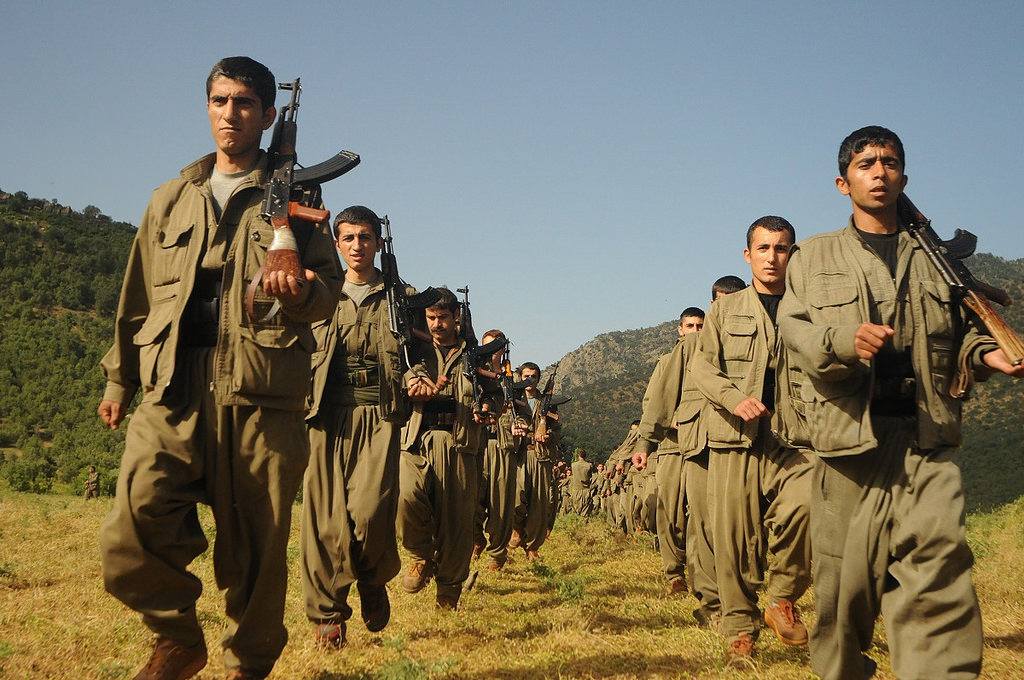
IRA attacks and the analysis of governmental response
During The Troubles (1968 – 1998) over 10 000 bomb attacks occurred in the UK. For the purposes of this paper, I three example cases of IRA terrorist bomb attacks with significant reaction (with significant consequences) from the government and the public.
M62 Coach Bombing
In February 1974, two years after the Bloody Sunday, the Provisional IRA (PIRA) bombed a coach bus in Northern England carrying off-duty British soldiers and their family members resulting in 12 dead and 14 (including six-year-old child) seriously injured (BBC, 2011). This event received a lot of media and public attention as it was the first serious attack on the British mainland. The public demanded people responsible for this attack to be brought to justice. The police was under a lot of pressure from all sides, public, political places and media. The ensuing police investigation led by Detective Chief Superintendent (DCS) George Oldfield was rushed, careless and ultimately forged, resulting in the arrest of the mentally ill Judith Ward (Oliver, 2002). Despite her retraction of her previous claims that she had carried out the bombing, the lack of any corroborating evidence against her, and serious gaps in her testimony which was frequently incoherent, she was wrongfully convicted in November 1974 (BBC, 2011).
Now let us go further deep into this event and analyse it through aforementioned models. This case is interesting mainly for the governmental response. The Group Think Model has several identifying attributes which are connected to each other – stress, norms and kill. The decision-making group (the political cabinet in this case) is demanded to act very quickly which puts it under a lot of pressure and stress. That often leads to the second symptom – kill. “Paradoxically, soft headed groups are often hard-hearted when it comes to dealing with outgroup or enemies” (Janis, 1991). The third symptom is purely sociological phenomenon and Janis calls it norms. “There is evidence from a number of social-psychological studies that as the members of a group feel more accepted by the others, which is a central feature of increased group cohesiveness, they display less overt conformity to group norms. Thus we could expect that the more cohesive a group becomes, the less the members will feel constrained to censor what they say out of fear of being socially punished for antagonizing the leader or any of their fellow members” (Janis, 1991). In this particular case, the political cabinet was under public pressure (stress) which it transferred on the police (DCS George Oldfield) and Oldfield who could not stand against this order (BBC, 2011) (norms) conducted an investigation of a mentally sick woman (kill). More importantly, the real perpetrators of this bomb attack had walked free. One of the pillars in fight against terrorism is justice. Due to aforementioned errors (full surrender to the attributes of Group Think) of the British officials involved in this decision-making process, the establishment had made one step into the Terrorism Trap.
The attack’s most lasting consequence was the adoption of much stricter anti-terrorism laws in Great Britain and Northern Ireland, allowing police to hold those ‚suspected of terrorism‘ for up to seven days without charge, and to deport those “suspected of terrorism” in Britain or the Republic of Ireland to Northern Ireland to face trial, where special courts judged with separate rules on “terrorism” suspects. That contributed to consequent IRA reactions (bombings and attacks) and to further alienating of Irish population (BBC, 2011). Similarly to case of Judith Ward was this step taken under stress (public demanded real steps) and in hard-hearted way.
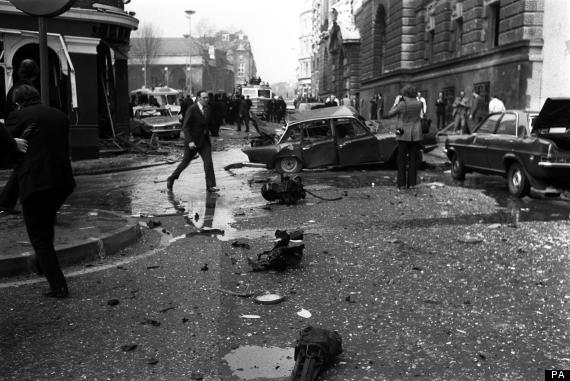
Birmingham Bar Bombings
The PIRA targeted pubs often visited by British military personnel and from October to November 1974 conducted two bomb strikes in Guilford and Birmingham resulting in 28 casualties and more than 200 hurt. These attacks were carried out by the PIRA´s Active Service Unit which operated on the British mainland (Reuters, 2011). This case focuses on both governmental and public response.
Response of the society was imminent. The bombings caused anti-Irish mood in Birmingham, which had an Irish community of approx. 100 000. Irish people were shunned from public places, subjected to physical and verbal assaults and even death threats. Irish homes, pubs, businesses and community centres were attacked. Several factories went into strikes and airports refused to serve flights to Ireland (McKittrick, 2004). The IRA has never claimed responsibility for this attack and surprisingly backing off instructed its Active Service Units that the city is off-the-limits (CAIN, 2015).
In the following police investigation, so called The Birmingham Six (a group of 6 individuals) after found guilty by the unanimous verdict of the jury were arrested and subsequently sentenced to life imprisonment in 1975. In 1991 their convictions were declared unsafe and unsatisfactory by the Court of Appeal and all men of The Birmingham Six were released and later awarded compensation (CAIN, 2015). An evidence suggest that the suspects were tortured with beating and even burnt with a lit cigarette. That, with only circumstantial evidence led to imprisonment of those six suspects. Police officers who conducted the interrogation were commended by the judge who had carried out the sentence (Mullin, 1990). Judicial system in democratic country should be separate from the executive one. The judge´s commendation of those officers just after the trial in which suspects were sentenced upon forced confession and circumstantial forensic evidence was at least suspicious and the judge must have known that much not to at least commend the officers.
Despite the result, the back off of IRA, public response (attacks towards Irish people in Birmingham) to Birmingham Bar Bombings was surely an unwanted response in democratic civil society build on the rule of law. Both governmental response (the rushed prosecution) and consequences of that worsened the situation in the similar way as in M62 Coach Bombing. Once again, we can find rushed investigation caused by the similar attributes of the Group Think Model there.
The Brighton Hotel Bombings
Probably the most known IRA bombing was carried out against a hotel in Brighton, where Conservative Party annual conference took place in 1984. Margaret Thatcher, UK´s PM back then, was present there as well, but she escaped unharmed. Five people including high-profile members of the Party were killed and other 31 were injured (Reuters, 2011). This case´s focus is on the governmental response.
Few hours after the bombing, Thatcher delivered a speech in which she strongly stated that “not only this attempt, but all attempts to destroy democracy by terrorism will fail”. Her defiance towards terrorism and firm approach made her popularity rise (British Political Speeches, 2016). The IRA paradoxically helped one of their biggest enemies to stay in office for the next six years. Before this attack, the British politicians did not know how to deal with terrorism and all political initiatives in the province had been conducted on an assumption that the terrorist interests should be placated. Just few hours before the bomb went off in Brighton, the Institute of European and Defence Studies introduced the report of its study group on Ulster. It suggests that the government should establish an upper tier of local government in Ulster which would give real work for the political interests in the province without forever raising the national question (Moore, 2013). That didn´t happen. This IRA action once again prompted a non-peaceful reaction from the government and antagonist Thatcher´s approach towards IRA and its demands. That held both parties in a trap for several following years.
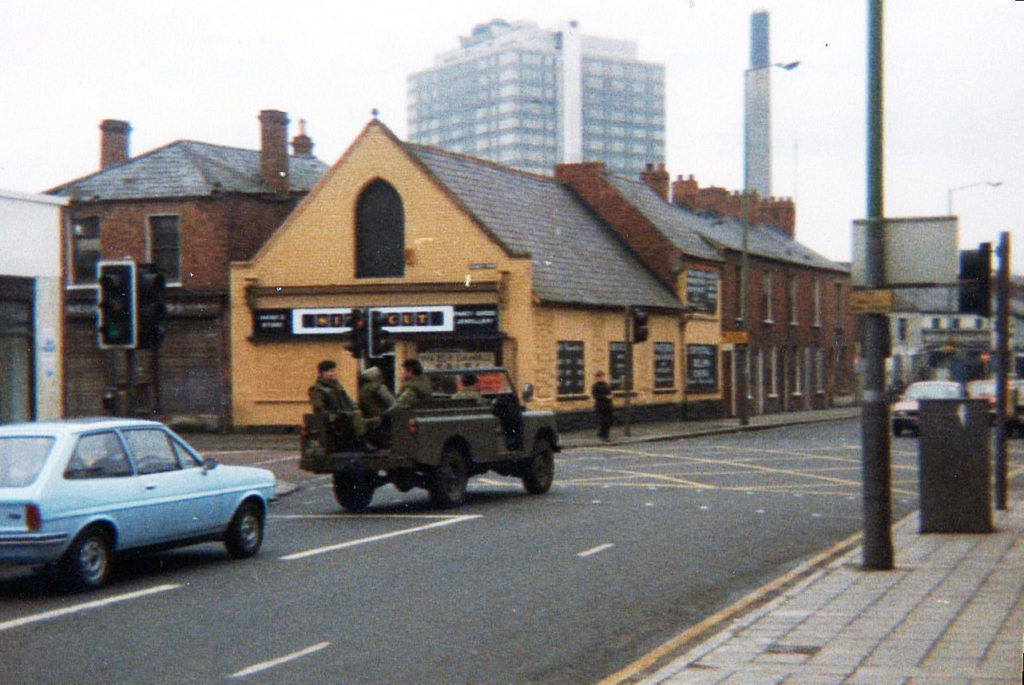
TAK attacks and the analysis of governmental response
In order to choose similar examples, comparable with IRA attack, I will focus on two recent Ankara bombings in 2016 and on an analysis of the response. Though both of them were perpetrated by Kurdistan Freedom Falcons, this organization is reportedly a fraction of the PKK.
February 2016 Ankara bombings
This attack targeted mostly military personnel in shuttle busses but there were civilian casualties as well. Over 28 people died and 60 more were injured. The explosion was aimed at a convoy of military vehicles as it passed through the administrative centre and it occurred in a very heart of Ankara near military headquarters, parliament building and other important administrative sites (The Guardian, 2016a).
Reaction from the government was very straight-forward. Among the condemnation by ministers and other officials of the ruling Justice and Development Party (AKP) the president Erdogan promised hard retaliation to those responsible for the bombing. Though the opposition HDP´s senior member condemned attacks as well, the parliament was not able to make a unanimous declaration (Hürriyet Daily News, 2016).
After identification of the perpetrator being a Syrian YPG member, 14 other people were arrested to have allegedly connections with the attack. That resulted in complete refusal by Turkish government to negotiate with PYD and YPG. Turkish artillery in the south of the country shelled positions of Kurdish fighters in Syria for the fifth day in a row on Wednesday persuing further hard-power policy in the region. After the bombing, Turkish military also conducted airstrikes against several PKK targets in northern Iraq (The Guardian, 2016b).
Typical symptoms for “victims” of the Group Think are among others feeling of invulnerability, rationale, conviction that the morale is on their side, pressure and unanimity. All of these aspects can be found in this case. After the breakdown of peace process in 2009, we can observe a strong belief with the Turkish governmental officials (especially the president Erdogan) that the fight against PKK is legitimate and it is conducted with full force (airstrikes, artillery and other heavy weaponry), hence the feeling of invulnerability. This aspect is particularly dangerous in policy-conducting process as it restrains solutions to mainly violent ones. We can also observe a strong unanimity especially within the ruling AKP circles. President Erdogan, PM Davutoglu and other AKP ministers have condemned this attack and have made clear that the perpetrators will be brought to justice (The Guardian, 2016a). Danger of this aspect of group dynamics lies in not opposing the majority within the group. When one is against the majority consensus within the group, one is more likely to keep his remarks (reservations) to himself so he wouldn’t be in some way excluded from the group even at cost of that very wrong decision is reached (Janis, 1991).

March 2016 Ankara bombings
The bombing claimed by TAK took place in Kizilay district of Ankara and this time purely-civilian objects were targeted killed 37 and over 125 injured. Following the attack, Turkish authorities imposed restrictions on media not to report about it and shut down Twitter social network. The government had had intelligence about planned attacks days before it occurred (The Telegraph, 2016).
In aftermath of the attack, in spite of condemnations, president Erdogan has called for change of the terrorism definition. He has claimed the definition of a terrorist should be changed to include their supporters, such as civil activists, journalists and academics (The Independent, 2016). This call is the next step in his policy which is in contradictory to some democratic features such as the freedom of speech. Following the attack, jets of the Turkish Air Force raided PKK positions (included the Qandil Mountains, the base of PKK leadership) in Iraqi Kurdistan. Over 30 suspected members of PKK or the affiliates were arrested in 45 different operations. Overall, 79 people were taken into custody throughout the country (The Guardian, 2016c). The aspects of Group Think here are almost identical to the February Ankara Bombing case. Consequences and reaction of the Turkish government was harsher than the previous one and it is probable that instead of trying to get out of this circle of violence, both parties are falling deeper into the Terrorism Trap.
Conclusion
System errors connected with the model of Group Think occurred in both cases, in the decision-making process of both Turkish and British governments. Group dynamics and its factors has had a huge influence on both conflicts. The result isn’t necessarily always bad, but the process itself surely is. In his paper, Janis Irving puts up several suggestions how to avoid errors in decision-making within group such as appointing critical evaluators to your own group or dividing into two independent groups working on the same solution (more in Janis´s paper, Janis, 1991).
In the investigations and prosecutions most visible in M62 Coach Bombing, Birmingham Bar Bombing, legal steps were taken under pressure and were rushed to which attributes of group dynamics (stress, norms and kill) hardly contributed. Instead of democratic response to undemocratic terrorist attack, the government took steps to trample its own nature and even more damage was done. Hence it is in the best interest of any democratic country fighting against undemocratic means to avoid unnecessary errors such as Group Think and watch out for its aspects.
References
1974: Soldiers and children killed in coach bombing. BBC [online]. 2011 [cit. 2016-05-01]. Available from: http://news.bbc.co.uk/onthisday/hi/dates/stories/february/4/newsid_4148000/4148933.stm
1982: IRA bombs cause carnage in London. BBC [online]. 2012 [cit. 2016-05-01]. Available from: http://news.bbc.co.uk/onthisday/hi/dates/stories/july/20/newsid_2515000/2515343.stm
A Chronology of the Conflict – 1974. CAIN [online]. 2015 [cit. 2016-05-01]. Available from: http://cain.ulst.ac.uk/othelem/chron/ch74.htm#Nov
Ankara explosion: Turkish president vows war on terror as officials say one bomber was ‚female Kurdish militant‘. The Telegraph [online]. 2016 [cit. 2016-05-02]. Available from: http://www.telegraph.co.uk/news/worldnews/europe/turkey/12192759/Ankara-explosion-Several-wounded-in-centre-of-Turkish-capital-Kizilay.html
At least 28 killed by Ankara car bomb targeting military personnel. The Guardian [online]. 2016a [cit. 2016-05-01]. Available from: http://www.theguardian.com/world/2016/feb/17/ankara-explosion-turkey-injures-large-number-of-people-reports-say
Leader’s speech, Brighton 1984. British Political Speeches [online]. 2016 [cit. 2016-05-01]. Available from: http://www.britishpoliticalspeech.org/speech-archive.htm?speech=130
MANCHESTER BOMB. BBC [online]. 2008 [cit. 2016-05-01]. Available from: http://www.bbc.co.uk/manchester/content/articles/2006/06/21/150606_bomb_timeline_feature.shtml
MCKITTRICK, David. Lost Lives: The Stories of the Men, Women and Children Who Died as a Result of the Northern Ireland Troubles. 2. Mainstream Publishing, 2004. ISBN 978-1840185041.
MOORE, Charles. After the Brighton bomb. The Spectator [online]. 2013 [cit. 2016-05-01]. Available from: http://www.spectator.co.uk/2013/04/after-the-brighton-bomb/
MULLIN, Chris. Error of Judgement: The Truth About The Birmingham Bombings. 1. Poolbeg Press Ltd, 1990. ISBN 978-1-853-71365-1.
OLIVER, Mark. Miscarriages of justice. The Guardian [online]. 2002 [cit. 2016-05-01]. Dostupné z: http://www.theguardian.com/uk/2002/jan/15/ukcrime.markoliver¨
Paul T. Hart. Irving L. Janis‘ Victims of Groupthink. Political Psychology [online]. 1991, 12(2), 247-278. ISSN 0162895X.
President Erdogan wants to change definition of ‘terrorist’ to include journalists and politicians. The Independent [online]. 2016 [cit. 2016-05-02]. Available from: http://www.independent.co.uk/news/world/middle-east/turkey-s-president-erdogan-wants-definition-of-terrorist-to-include-journalists-as-three-academics-a6933881.html
Timeline – Worst IRA bomb attacks on mainland Britain. Reuters [online]. 2011 [cit. 2016-05-01]. Available from: http://uk.reuters.com/article/uk-britain-security-bombings-idUKTRE74F31Q20110516
Turkey says Kurds in Syria responsible for Ankara car bomb. The Guardian [online]. 2016b [cit. 2016-05-02]. Available from: http://www.theguardian.com/world/2016/feb/18/explosion-hits-another-turkish-military-convoy-one-day-after-ankara-attack
Turkish jets attack Kurds as Ankara bomb blamed on PKK. The Guardian [online]. 2016c [cit. 2016-05-02]. Available from: http://www.theguardian.com/world/2016/mar/14/turkey-ankara-attack-one-bombers-was-pkk-member-officials-say
Turkish parliament fails to make a joint declaration after Ankara attack. Hürriyet Daily News [online]. 2016 [cit. 2016-05-02]. Available from: http://www.hurriyetdailynews.com/turkish-parliament-fails-to-make-a-joint-declaration-after-ankara-attack.aspx?pageID=238&nID=95362&NewsCatID=338



